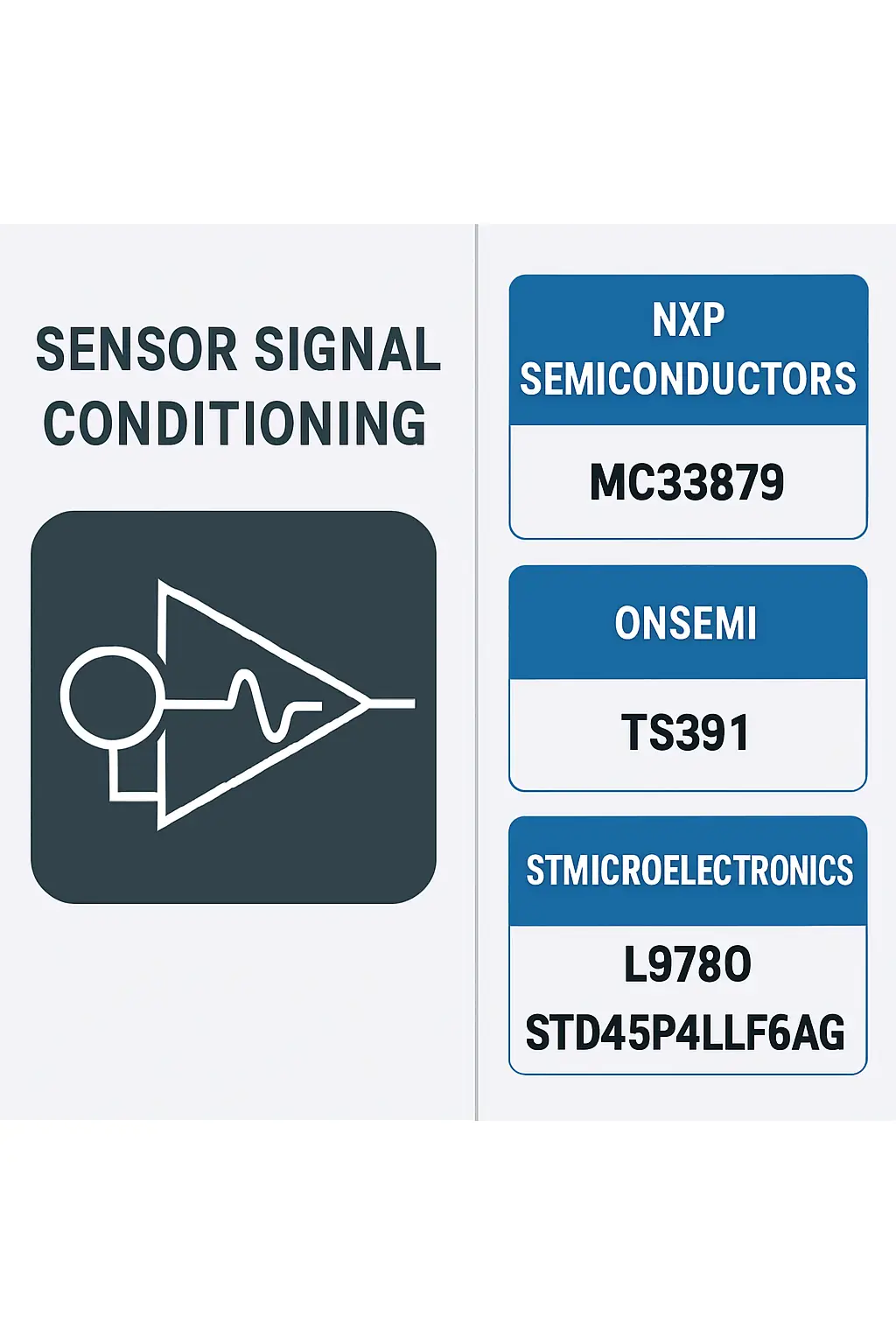Sensor Signal Conditioning
The Sensor Signal Conditioning module is a critical component within the Engine Control Units (ECU) of Powertrain & ICE Management systems in Automotive Electronics. It serves as the interface between various sensors and the ECU, ensuring accurate and reliable data transmission for engine performance monitoring and control.
This system processes raw signals from sensors such as temperature, pressure, and rotational speed sensors, conditioning them to meet the required voltage levels, filtering noise, and converting analog signals to digital for processing by the ECU. By doing so, it enhances the precision of engine management functions, including fuel injection timing, ignition control, and emission regulation.
Sensor Signal Conditioning plays a vital role in improving vehicle efficiency, reducing emissions, and enhancing overall driving performance. It is widely used in modern internal combustion engines (ICE) to support advanced driver assistance systems (ADAS) and hybrid powertrain technologies. The module ensures that the ECU receives clean, stable, and accurate sensor data, enabling optimal engine operation under varying conditions.
Designed for reliability and durability, this technology supports a wide range of automotive applications, from standard passenger vehicles to high-performance and commercial vehicles. Its integration into the ECU enables real-time adjustments, contributing to improved fuel economy, reduced maintenance costs, and enhanced safety.
In summary, Sensor Signal Conditioning is an essential element in automotive electronics, providing accurate data processing for efficient and safe engine operation. Its application across Powertrain & ICE Management systems makes it a key enabler of modern vehicle performance and compliance with environmental standards.
Details
Sensor Signal Conditioning

Related Parts
| Series Name | Description | Manufacturer Name | Attribute Description |
|---|---|---|---|
| NXP Semiconductors | 14-channel high-side/low-side switch, 5V supply, SPI interface, ±36V load voltage, 0.7A max current per channel, thermal protection, fault detection, automotive grade. | ||
| onsemi | Low-power comparator, single supply 2.0–36 V, open-drain output, 1.3 μA supply current, rail-to-rail input, 1.5 μs response time, operating temp -40°C to +125°C. | ||
| onsemi | Quad 2-input OR gate, 3–15V supply, high noise immunity, TTL-compatible inputs, low power CMOS, max propagation delay 60ns at 5V, operating temperature -55°C to 125°C. | ||
| onsemi | Voltage regulator, 1.2 V to 5.0 V output, 100 mA, ±2% accuracy, low dropout, SOT-23 package, operating temperature -40°C to +125°C, low quiescent current, suitable for portable applications. | ||
| onsemi | Adjustable shunt regulator with 1.24V reference voltage, 1% initial accuracy, 100uA to 100mA operating current, low 0.35Ω dynamic impedance, -40°C to +125°C operating temperature. | ||
| STMicroelectronics | 36 V, 3.3/5 V LDO regulators, watchdog, SPI interface, voltage monitoring, fault detection, low-power mode, 48-pin QFN package, operating temperature -40°C to 150°C. | ||
| STMicroelectronics | P-channel 45V -10A -1.8W, RDS(on) = 42mΩ, VGS(th) = -2.5V, TO-252 package, suitable for power management and load switching applications. | ||
| STMicroelectronics | 32-bit ARM® Cortex®-M0+ core, up to 80 MHz, 128 KB Flash, 20 KB RAM, 5× PWM, 4× SPI, 2× I2C, 1× UART, 16-bit ADC, 12-channel DMA, -40°C to 125°C. | ||
| STMicroelectronics | 20A, 400V, N-channel STripFET V LDMOS, 0.11Ω RDS(on), 200mJ EAS, TO-220/TO-263 package, fast switching, suitable for SMPS and motor control. | ||
| STMicroelectronics | 4-channel high-side driver, 5V supply, 0.4A max current per channel, 12V to 60V output voltage, integrated diagnostics, SPI interface, thermal shutdown, overcurrent protection, suitable for industrial and automotive applications. |








.png?x-oss-process=image/format,webp/resize,h_32)










